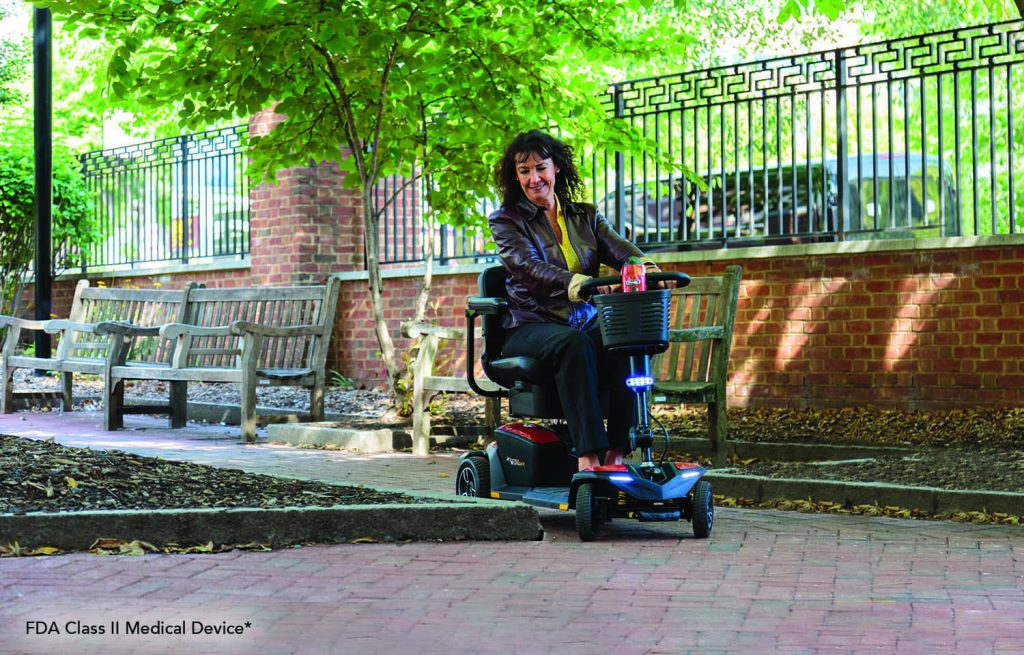A wheelchair is more than just a mobility device—it’s a lifeline that provides independence and freedom of movement. To keep your wheelchair in optimal condition, regular maintenance is essential. Whether you use a manual or powered wheelchair, taking the time to care for it properly will ensure safety, functionality, and longevity. In this guide, I’ll share essential tips for maintaining your wheelchair and troubleshooting common issues, so you can keep moving confidently.
Why Regular Maintenance Matters
Wheelchairs experience daily wear and tear, from navigating uneven terrain to frequent use in tight spaces. Proper care ensures:
- Safety: A well-maintained wheelchair reduces the risk of accidents caused by loose parts or faulty mechanisms.
- Comfort: Clean and adjusted components provide a smoother, more comfortable ride.
- Cost Savings: Preventive maintenance minimizes the need for expensive repairs or replacements.
1. Regular Cleaning
Keeping your wheelchair clean not only improves its appearance but also prevents dirt and debris from causing mechanical issues.
a. Cleaning Your Manual Wheelchair
- Wipe Down the Frame: Use a damp cloth with mild soap to clean the wheelchair’s frame. Avoid harsh chemicals that could damage the finish.
- Focus on Moving Parts: Clean the wheels, axles, and caster forks to remove dirt, hair, or debris that could cause sticking or poor performance.
- Dry Thoroughly: After cleaning, make sure all parts are completely dry to prevent rust, especially for metal components.
b. Cleaning Your Powered Wheelchair
- Protect Electronics: Avoid getting the battery or control panel wet. Use a soft, dry cloth to clean these sensitive areas.
- Vacuum Cushions and Seat Covers: Regularly vacuum to remove crumbs and dust, and wash removable covers according to the manufacturer’s instructions.
2. Inspecting for Wear and Tear
Routine inspections help you catch small issues before they become major problems. Check the following areas regularly:
a. Tires
- Check Tire Pressure: For pneumatic (air-filled) tires, ensure they are inflated to the recommended pressure to avoid uneven wear or difficulty maneuvering.
- Inspect for Damage: Look for cracks, punctures, or worn treads, and replace tires as needed.
b. Wheels and Casters
- Spin Test: Spin the wheels and casters to ensure they rotate freely. If they wobble or stick, clean and lubricate the axles or consider replacing the bearings.
- Tighten Bolts: Check the bolts on the wheels and caster forks to make sure they’re secure.
c. Brakes
- Test Brake Functionality: Engage and disengage the brakes to ensure they hold the wheels firmly in place. Adjust or replace them if they feel loose or unresponsive.
d. Seat and Backrest
- Inspect Upholstery: Look for signs of wear, such as fraying or sagging, and replace damaged parts to maintain comfort and support.
3. Lubricating Moving Parts
Proper lubrication keeps your wheelchair’s moving parts functioning smoothly.
a. Where to Apply Lubrication
- Axles and Bearings: Apply a light, non-greasy lubricant to prevent friction and ensure smooth rotation.
- Caster Forks: Add lubricant to the pivot points to maintain easy maneuverability.
b. Avoid Over-Lubrication
Excess lubricant can attract dirt and debris, which may cause more harm than good. Wipe away any excess after application.
4. Battery Care for Powered Wheelchairs
For powered wheelchairs, battery maintenance is critical to ensure reliability.
a. Charging the Battery
- Charge Regularly: Keep your battery fully charged to avoid being stranded unexpectedly. Most manufacturers recommend charging after each use.
- Avoid Overcharging: Unplug the charger once the battery is fully charged to prevent damage.
b. Inspecting the Battery
- Check for Corrosion: Look for buildup around the terminals and clean them with a dry cloth or a battery terminal cleaner if needed.
- Monitor Performance: If your wheelchair loses power quickly or struggles to hold a charge, it may be time to replace the battery.
5. Addressing Common Issues
Even with regular maintenance, occasional issues may arise. Here are some common problems and how to handle them:
a. Squeaky Wheels
- Solution: Clean the axles and apply lubricant to reduce noise. Check for misalignment or loose parts that may be causing friction.
b. Difficulty Steering
- Solution: Inspect the caster wheels for debris or uneven wear. Tighten any loose bolts or replace damaged components.
c. Unstable Brakes
- Solution: Adjust the brake tension according to the manufacturer’s guidelines. If the brakes are worn out, replace them immediately to ensure safety.
d. Reduced Battery Life
- Solution: Ensure proper charging habits and inspect the battery for signs of wear. If problems persist, consult your wheelchair provider for a replacement.
6. Professional Maintenance and Repairs
While regular DIY maintenance is crucial, professional servicing should also be part of your care routine.
a. Annual Tune-Ups
Schedule a professional inspection at least once a year to identify and address any issues you may have missed.
b. Manufacturer Support
Contact your wheelchair manufacturer for guidance on repairs or to order replacement parts.
c. Warranty and Insurance
Check your warranty or insurance policy to see if repairs or replacements are covered, which can help reduce costs.
7. Tips for Long-Term Care
- Protect from Weather: Avoid exposing your wheelchair to rain or extreme temperatures, as moisture and heat can damage components.
- Store Properly: Keep your wheelchair in a clean, dry space when not in use.
- Follow Manufacturer Guidelines: Always refer to your wheelchair’s manual for specific maintenance recommendations.
FAQs
1. How often should I clean my wheelchair?
It’s best to clean your wheelchair at least once a week, with more frequent cleaning for parts that accumulate dirt or debris quickly.
2. How long do wheelchair tires last?
This depends on usage, but most wheelchair tires last 1-2 years. Replace them sooner if you notice significant wear or damage.
3. Can I replace wheelchair parts myself?
Yes, many parts, like tires, brakes, and seat cushions, can be replaced at home. However, more complex repairs should be handled by a professional.
4. What should I do if my powered wheelchair battery isn’t holding a charge?
First, check the charging habits and battery terminals for corrosion. If the problem persists, consult a professional to determine if the battery needs replacement.
5. How do I know if my wheelchair needs professional servicing?
:If you notice persistent issues like difficulty steering, unresponsive brakes, or electrical malfunctions, it’s time for a professional inspection.
Conclusion: Keeping Your Wheelchair in Top Shape
Proper maintenance of your wheelchair ensures it stays safe, comfortable, and functional for years to come. By incorporating these care tips into your routine, you can prevent costly repairs, avoid unnecessary breakdowns, and maintain your independence. Whether you’re using a manual or powered wheelchair, a little effort goes a long way in preserving its performance and reliability. Take care of your wheelchair, and it will take care of you!






